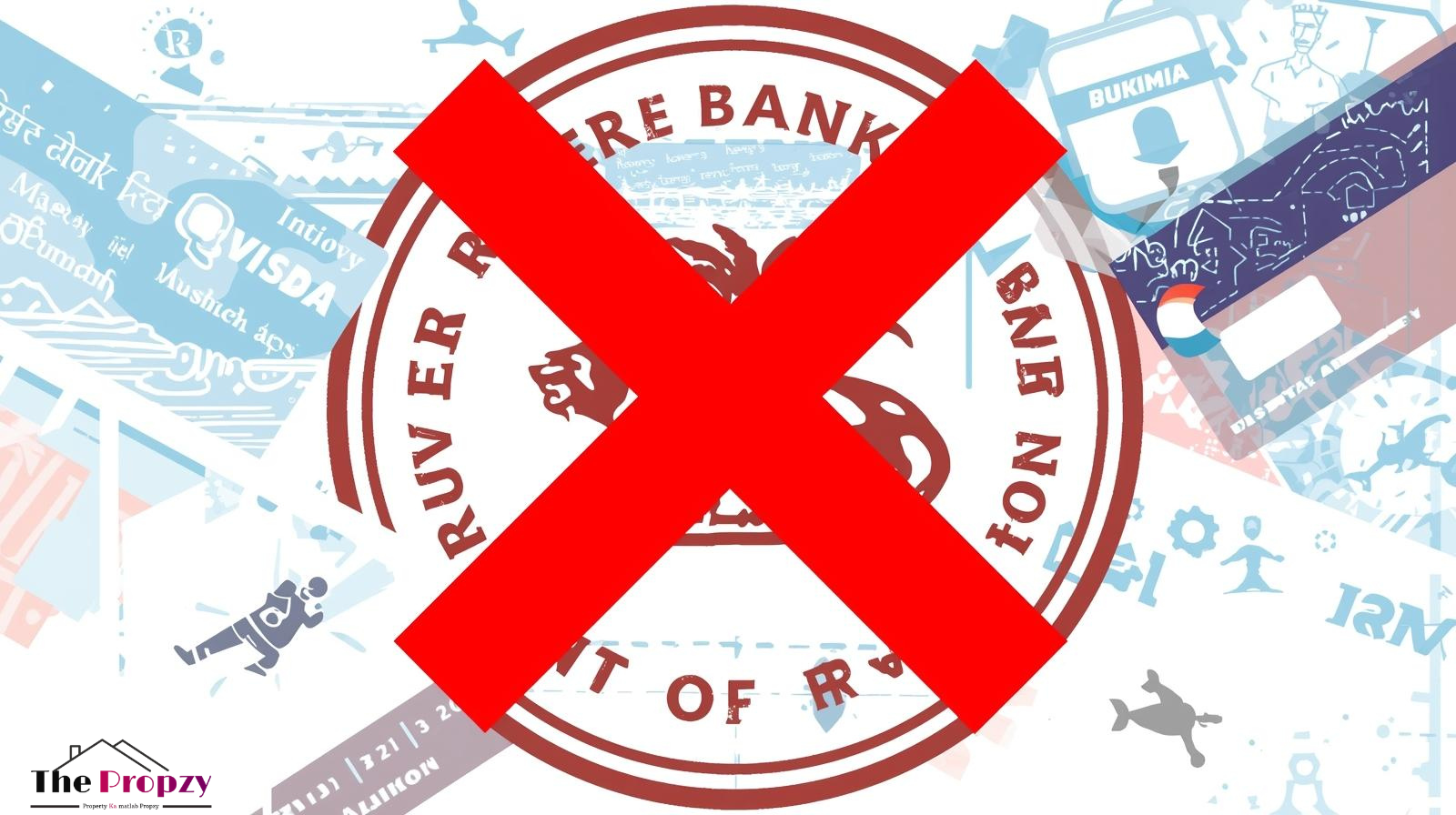In a move that has sparked widespread discussion across the financial and real estate sectors, the Reserve Bank of India (RBI) has officially blocked the use of credit cards for rent payments processed through third-party apps and platforms. This regulatory step is aimed at tightening the loop on unmonitored financial activities, reducing misuse of credit facilities, and enhancing the transparency of digital transactions in India.
While this decision might appear sudden, it is rooted in concerns about rising credit risks, potential misuse of payment gateways, and the increasing burden of short-term debt among consumers. Let’s break down what this decision means, why the RBI took this step, and how it impacts tenants, landlords, and real estate investors.
1. Understanding the RBI’s Move
Until recently, many tenants in India were using third-party fintech apps and platforms—such as CRED, Paytm, NoBroker, Magicbricks Pay, and others—to pay their house rent using credit cards. These apps allowed users to transfer rent to landlords’ bank accounts while charging the tenant’s credit card.
It was a convenient solution—tenants could earn reward points, enjoy cashback, and delay rent payments by using the credit card’s billing cycle.
However, the RBI observed that several users were misusing this feature by transferring money to themselves or others, essentially turning it into a cash advance under the guise of rent payment. This practice led to potential credit risks, false reporting of transactions, and circumvention of banking norms.
As a result, the RBI has now instructed banks and payment networks (like Visa and Mastercard) to block such rent transactions when they are processed through non-bank or third-party platforms.
2. Why Did RBI Ban Credit Card Rent Payments?
The RBI’s decision stems from a few key concerns:
a) Prevention of Credit Misuse
Many individuals were using credit cards to pay “fake rents” to family or friends just to generate reward points or withdraw cash indirectly. This practice distorted the true purpose of credit cards and posed financial risks to banks.
b) Rising Consumer Debt
India has seen a sharp rise in credit card spending in recent years, much of it attributed to lifestyle expenses. Allowing rent payments via credit cards added to this burden, increasing short-term liabilities and reducing the financial discipline of users.
c) Lack of Transparency
Third-party apps often acted as intermediaries between the cardholder and the landlord, creating gaps in transaction visibility for banks and regulators. By blocking such payments, the RBI aims to ensure clear traceability of where and how credit is being used.
d) Regulatory Compliance
The central bank is also tightening oversight on payment aggregators and fintech platforms that process credit transactions without being directly regulated by the RBI. This move reinforces its efforts to bring all digital financial activity under proper governance.
3. Who Will Be Affected?
This directive affects millions of urban renters—especially young professionals and NRIs—who rely on credit cards for rent payments.
a) Tenants
Tenants who enjoyed the convenience of paying rent via credit cards will now need to switch to UPI, NEFT, IMPS, or debit card payments. They will no longer be able to leverage the 30–45-day interest-free period that credit cards offer.
b) Landlords
Landlords may notice a decline in rent receipts via fintech apps, as tenants move to direct bank transfers. However, this also ensures that transactions are cleaner and fully traceable, reducing the risk of payment disputes.
c) Fintech Platforms
Apps like CRED, Paytm, and NoBroker will face a significant impact on their rent payment businesses. These companies had built features and campaigns around credit card rent payments, which attracted heavy transaction volumes each month. They will now have to restructure their business models or shift focus to other financial services.
4. What Are the Alternatives Now?
Even though credit card rent payments through third-party apps are no longer allowed, there are still several legitimate and convenient options for paying rent safely:
✅ Direct Bank Transfers
You can use NEFT, IMPS, or RTGS from your bank account directly to your landlord’s account. These methods are secure and leave a clear transaction trail.
✅ UPI Transfers
Apps like Google Pay, PhonePe, and Paytm allow quick and instant rent transfers using UPI IDs. UPI transactions are free and widely accepted.
✅ Standing Instructions
Tenants can set up standing instructions or auto-debit mandates through their bank accounts to ensure rent is paid on time each month.
✅ Debit Cards
Some landlords accept debit card payments through authorized payment gateways. While it doesn’t provide credit benefits, it’s a direct and compliant payment method.
5. The Impact on the Real Estate Market
This decision, while financial in nature, also has broader implications for the real estate market—especially in urban areas with a large renting population.
a) Increased Cash Flow Discipline
Tenants who relied on credit cards for rent will now need to manage their monthly finances more carefully. This could lead to better budgeting habits and more responsible financial planning.
b) Transparency in Rental Transactions
With direct payments becoming the norm, there will be greater visibility and traceability of rental transactions—beneficial for taxation and property documentation.
c) Impact on Rent Collection Apps
Many real estate tech startups built rent collection tools around credit card payments. They may now pivot toward digital rent agreements, e-verification, or property management solutions to sustain their user base.
d) Long-term Trust in the System
RBI’s move reinforces the importance of financial prudence and regulatory oversight, which strengthens India’s growing digital economy in the long run.
6. Expert Opinions: A Necessary Move or a Setback?
Opinions are divided.
Financial experts view this as a necessary regulatory measure to prevent misuse of credit and maintain the stability of India’s payment ecosystem.
However, some argue that this step could limit consumer convenience, especially for those who genuinely used credit cards for cash flow management and rewards.
According to several industry analysts, the move will initially cause disruption, but in the long term, it will help create a healthier, more transparent digital payment ecosystem.
7. What Should You Do Next?
If you’ve been using a credit card for rent payments, here’s what you can do:
- 🏦 Switch to UPI or bank transfers for all rent transactions.
- 📄 Keep digital receipts for proof of payment.
- 📆 Adjust your financial planning to accommodate direct monthly debits.
- 🧾 Update your landlord’s preferred payment mode to avoid missed rent deadlines.
- 💡 Avoid apps offering workarounds, as these may violate RBI norms or put your financial data at risk.
8. Final Thoughts
The RBI’s decision to block credit card rent payments through third-party apps marks another step in India’s ongoing effort to regulate the digital finance landscape. While it may cause short-term inconvenience, it’s a move toward financial discipline, transparency, and accountability.
For the average renter, this is an opportunity to rethink credit usage and adopt more stable, compliant payment methods. For the real estate sector, it’s a sign that digital innovation must now align closely with regulatory frameworks.
As India continues to digitize its economy, the RBI’s proactive approach ensures that growth remains sustainable, secure, and systemically sound.





Join The Discussion